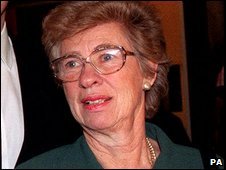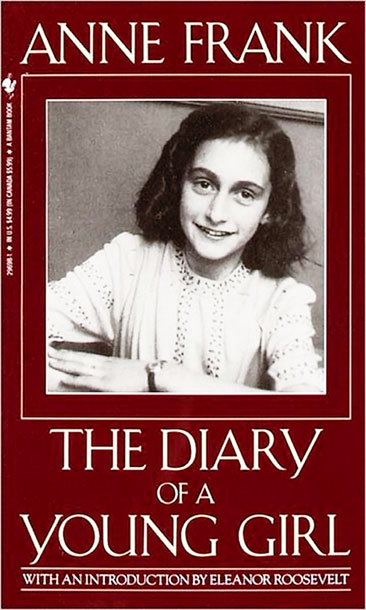Here’s some news from the Orange County register: Eva Schloss, Anne Frank’s stepsister, is in California on a speaking tour. She will speak about her stepsister* at 10 local synagogues.
[*Schloss’s mother married Otto Frank after the war’s end, and after Anne Frank’s own slow death at the Bergen-Belsen concentration camp. The stepsister title is a wee bit specious, but hey…]
The Diary of a Young Girl (or, The Diary of Anne Frank) (originally, Het Achterhuis. Dagboekbrieven 14 juni 1942 – 1 augustus 1944) certainly holds a firm place in the 20th century’s literary canon.
The Diary was indeed the diary of a young Jewish teenager, Anne Frank. Published in 1947, it chronicles two years (1942-44) that Anne and her family spent hiding from Nazi forces–in a wee attic, above her father’s office in Amsterdam. Betrayed in 1944, the Franks were deported to concentration camps. Anne died of typhus in 1945, a month before British forces liberated Bergen-Belsen.
Why is this book so enduring?
Part of it is certainly the writing itself: detailed, lively and wholly personal. Anne is a also uniquely-placed narrator. She reported from Third Reich territory during the height of the Holocaust (early 1940s). Her old peers were either in concentration camps, unable to narrate events, or long gone–to London, or New York, or Shanghai. And the story has all the classic narrative elements: a perpetrator, a pursuit, young adolescent love, a stab in the back.
Timing would have been part of this too. Published in 1947, the diary anticipates, by at least a decade, the flood of (popular, retrospectively-written) Holocaust memoirs that we’re still swimming in.
This explains why Eva Schloss–who didn’t know Anne personally–can peg a writing/speaking career on her loose connection to her famous “stepsister.”
Schloss’ path reminds me a bit of certain members of the Churchill clan–who make the rounds, everywhere and constantly, recounting tales of (great) grandad Winston.

